To install a car alarm system, first, gather all the necessary tools and components. Then, carefully follow the instructions provided by the manufacturer to connect and mount the system.
Additionally, ensure the system is compatible with your vehicle’s electrical system and test the alarm after installation to ensure it is functioning properly and providing the desired level of security.
Understanding The Importance Of A Car Alarm System
The rising cases of car theft and vandalism
Car theft and vandalism have been on the rise in recent years, posing a significant threat to vehicle owners worldwide. According to recent statistics, there was a staggering increase in the number of car thefts and break-ins in various cities and towns. Criminals have become more sophisticated, finding new ways to bypass traditional security measures which makes it crucial for vehicle owners to take proactive steps to protect their assets.
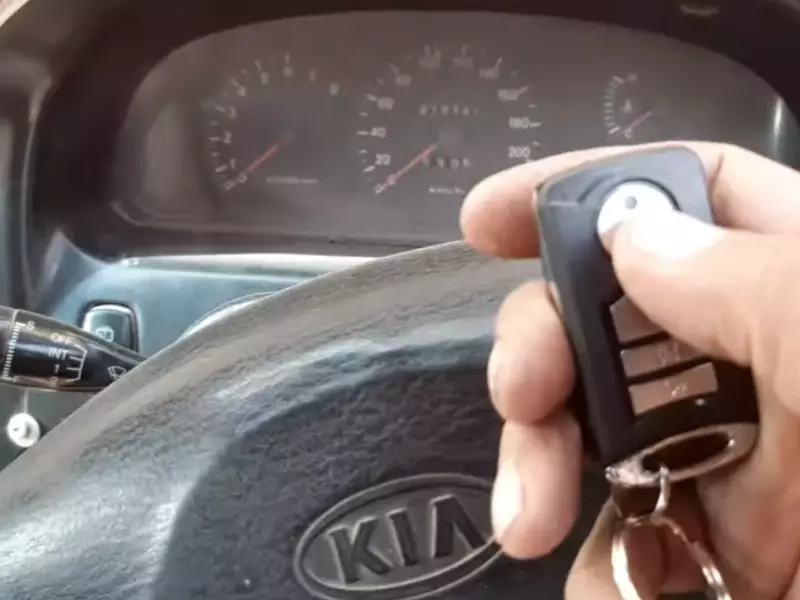
The role of a car alarm system in preventing thefts and break-ins
A car alarm system is a crucial component in ensuring the security of your vehicle. It acts as a powerful deterrent against potential thieves and vandals. When properly installed and implemented, a car alarm system can significantly reduce the risk of thefts and break-ins. It works by detecting unauthorized entry or attempts to tamper with the vehicle, immediately triggering a loud sound and flashing lights to attract attention. The activation of a car alarm system can startle thieves, discouraging them from proceeding further with their criminal activities.
Furthermore, car alarm systems have evolved over the years, incorporating advanced features that provide enhanced security. Modern car alarm systems come equipped with GPS tracking capabilities, allowing vehicle owners to locate their stolen cars quickly. This makes it significantly easier for law enforcement authorities to recover stolen vehicles and apprehend the culprits involved.
In addition to theft prevention, car alarm systems also protect against other potential risks. They can detect and notify you of various hazards, such as fire or extreme temperatures inside the vehicle, ensuring the safety of not only your car but also your loved ones or pets you may leave in your vehicle.
Investing in a car alarm system is a small price to pay for the peace of mind it provides. By installing a reliable and efficient car alarm system, you can rest assured that your vehicle is secure, reducing the risk of thefts, break-ins, and potential damage. In the unfortunate event of an attempted theft or break-in, the car alarm system will alert you immediately, allowing you to take appropriate action and protect your valuable asset.
Assessing Your Vehicle’s Compatibility For A Car Alarm System Installation
Before you dive into installing a car alarm system, it’s crucial to assess your vehicle’s compatibility. Not every car is suitable for a car alarm system installation, and considering a few factors beforehand can save you from potential compatibility issues down the road.
Factors to Consider When Determining If Your Car Is Suitable for a Car Alarm System
When it comes to choosing a car alarm system, not all vehicles are created equal. There are several factors you should consider to determine if your car is a good fit for a car alarm system. These factors include:
- The age of your vehicle: Older vehicles might not have the necessary wiring or technology to support a car alarm system. It’s important to check if your vehicle’s electrical system can handle the installation.
- The make and model of your car: Different car manufacturers have different electrical systems and protocols. Some car alarm systems may be more compatible with certain makes and models. Researching the compatibility of your vehicle’s make and model with various car alarm systems can help you make an informed decision.
- The existing features of your car: Some vehicles already come equipped with basic security features, such as built-in alarm systems or immobilizers. If your car already has some level of security measures in place, it’s important to consider how a car alarm system would integrate with these existing features.
Compatibility Issues and How to Resolve Them
If you’ve assessed your vehicle and have discovered some compatibility issues, don’t worry. There are several steps you can take to resolve these issues and ensure a successful car alarm system installation.
Consult with a Professional Installer
First and foremost, it’s always a good idea to consult with a professional car alarm system installer. They have the knowledge and expertise to assess the compatibility of your vehicle and recommend the best options for your specific make and model. They can also offer guidance on any necessary modifications or upgrades that may be required.
Consider a Universal Car Alarm System
If compatibility is a major concern, consider opting for a universal car alarm system. These systems are designed to work with a wide range of vehicles, offering more flexibility and compatibility. However, keep in mind that universal systems may have limited features compared to vehicle-specific ones.
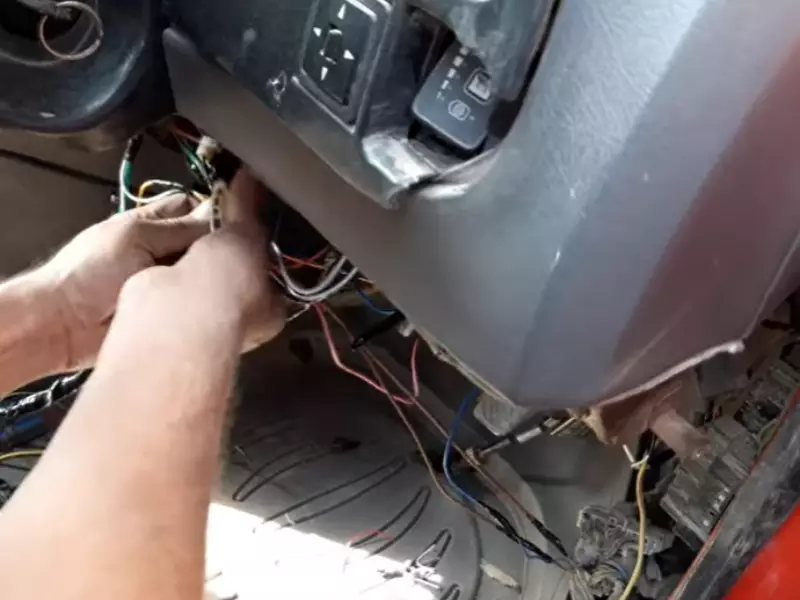
Upgrade Your Electrical System
In some cases, upgrading your vehicle’s electrical system can resolve compatibility issues. This may involve adding additional wiring or components to support the car alarm system. It’s important to consult with a professional installer to ensure the upgrade is done correctly and doesn’t interfere with the overall functionality of your vehicle.
Research Vehicle-Specific Installation Kits
For certain makes and models, there may be vehicle-specific installation kits available. These kits are specifically designed to ensure a seamless installation without any compatibility concerns. Researching and investing in a vehicle-specific installation kit can save you time and potential headaches during the installation process.
Assessing your vehicle’s compatibility for a car alarm system installation is a crucial step towards enhancing the security of your vehicle. By considering various factors and addressing any compatibility issues early on, you can enjoy the peace of mind that comes with a properly installed car alarm system.
Selecting The Right Car Alarm System For Your Vehicle
Exploring the different types of car alarm systems available
When it comes to selecting the right car alarm system for your vehicle, it’s important to understand the different types of systems available in the market. Car alarm systems have come a long way in recent years, offering advanced features and enhanced security options. Before you make your choice, take the time to explore the various options and determine which type of system best suits your needs.
Here are some of the different types of car alarm systems that you can consider:
- Passive car alarm systems: These systems are designed to automatically activate when the ignition is turned off and the vehicle is parked. The primary purpose of these systems is to provide protection against theft and unauthorized entry.
- Active car alarm systems: Unlike passive systems, active car alarm systems require manual activation using a remote control or a smartphone app. These systems offer additional security features such as remote locking and unlocking, engine immobilization, and GPS tracking.
- Two-way car alarm systems: Two-way car alarm systems provide real-time feedback to the user, informing them of any security breaches or attempts to tamper with the vehicle. These systems use a communication link between the vehicle and the remote control, allowing the user to monitor the status of their car at all times.
- Remote start car alarm systems: These systems not only offer security features but also allow you to start your vehicle remotely. With a remote start car alarm system, you can warm up your car during winter or cool it down during summer without even stepping outside.
Factors to consider when choosing the right system for your needs
Choosing the right car alarm system for your vehicle involves considering several factors to ensure that it meets your specific needs. Here are some key factors to keep in mind:
- Level of security: Consider the level of security you require for your vehicle. If you live in a high-crime area or own a valuable car, you may want to invest in a highly secure system with features like shock sensors, sirens, and engine immobilization.
- Budget: Determine your budget for a car alarm system. The price range for these systems can vary significantly, depending on the brand, features, and level of security. Set a budget that aligns with your needs and research systems within that range.
- Installation process: Check whether the system requires professional installation or if it can be easily installed by a DIY enthusiast. Some systems may require complex wiring and integration with your vehicle’s electronics, while others come with simple plug-and-play installation options.
- Compatibility: Ensure that the car alarm system you choose is compatible with your specific vehicle make and model. Different systems may have varying compatibility requirements, so double-check to avoid any compatibility issues.
- Additional features: Consider any additional features or functionalities that you may require from your car alarm system. This could include smartphone integration, GPS tracking, remote control range, and the ability to add on extra sensors or modules in the future.
By considering these factors and exploring the different types of car alarm systems available, you can make an informed decision when selecting the right system for your vehicle. Prioritize your security needs, be mindful of your budget, and choose a system that not only offers advanced features but also aligns with your long-term requirements. Investing in a reliable car alarm system can provide you with peace of mind and protect your valuable assets from potential theft and unauthorized access.
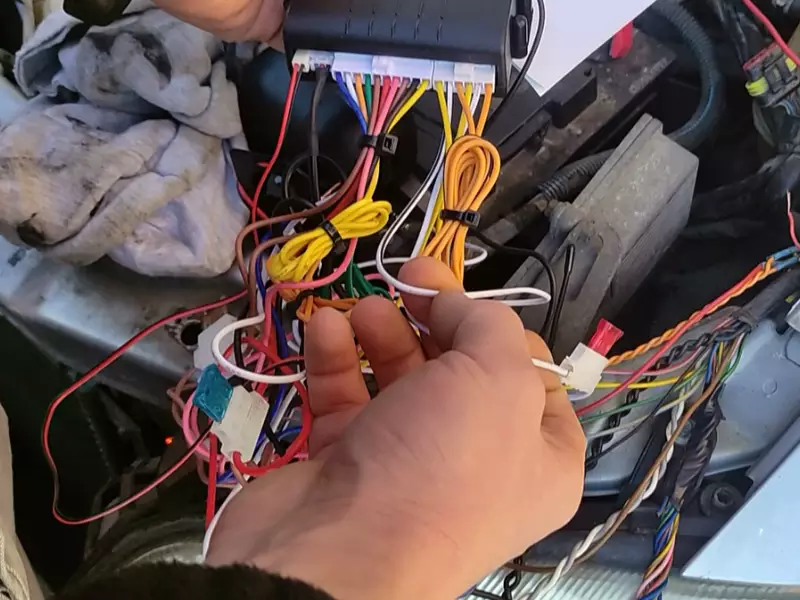
Step-By-Step Guide On How To Install A Car Alarm System
Installing a car alarm system is an essential step towards safeguarding your vehicle from theft or unauthorized access. With its ability to provide added security features, such as remote keyless entry and immobilization, a car alarm system serves as a deterrent for potential thieves. In this step-by-step guide, we will walk you through the process of installing a car alarm system, from gathering the necessary tools and materials to testing and configuring the system.
Gathering the necessary tools and materials
The first step in installing a car alarm system is to gather all the tools and materials you will need for the installation. Make sure your toolbox includes the following:
| Tools | Materials |
|---|---|
| – Screwdriver set | – Car alarm system kit |
| – Wire stripper | – Electrical tape |
| – Wire cutter | – Cable ties |
| – Multimeter | – Connectors |
Preparing your vehicle for installation
Before you start the installation process, it is important to prepare your vehicle to ensure a smooth and hassle-free installation. Follow these steps:
- Disconnect the vehicle’s battery to avoid any electrical mishaps during the installation.
- Identify a suitable location to mount the control unit, preferably in a hidden and secure area.
- Remove any panels or trims necessary to access the wiring in the vehicle.
Installing the control unit and wiring
Now that your vehicle is ready, you can proceed with installing the control unit and wiring. Follow these steps:
- Mount the control unit in the chosen location using the provided mounting brackets.
- Connect the necessary wires according to the manufacturer’s instructions, ensuring a secure and proper connection.
- Use electrical tape or connectors to protect the exposed wires and prevent any short circuits.
Connecting sensors and peripheral components
Once the control unit and wiring are in place, it’s time to connect the sensors and peripheral components. Here’s what you need to do:
- Identify the appropriate sensor locations, such as doors, hood, and trunk, and mount the sensors securely.
- Connect the sensors to the control unit using the designated wires, ensuring a proper and secure connection.
- Install any additional peripheral components, such as shock sensors or sirens, following the manufacturer’s instructions.
Testing and configuring the system
With the installation complete, it’s crucial to test and configure your car alarm system to ensure it functions properly. Follow these steps:
- Reconnect the vehicle’s battery and test the system by arming and disarming it using the provided remote control.
- Check if all sensors and components are working correctly by triggering the alarm and ensuring the appropriate response.
- Configure any settings, such as sensitivity levels or additional features, according to your preferences.
By following these step-by-step instructions and taking the necessary precautions, you can successfully install a car alarm system to protect your vehicle from theft or unauthorized access. Remember to consult the user manual of your specific car alarm system for any additional instructions or troubleshooting tips.
Troubleshooting Common Issues During Installation
Installing a car alarm system can provide you with peace of mind and added security for your vehicle. However, like any other installation process, you may encounter some common issues along the way. In this section, we will discuss the common problems that can arise during the installation of a car alarm system and provide you with troubleshooting tips and techniques to overcome them.
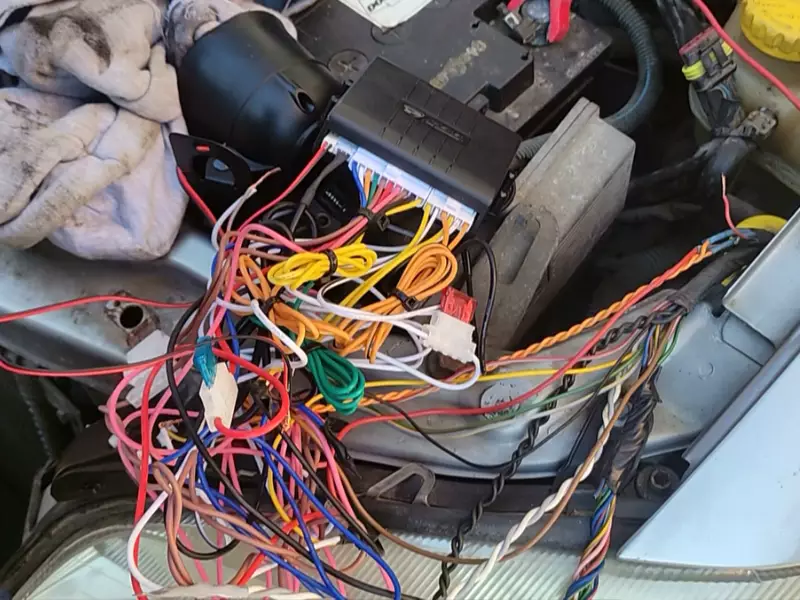
Identifying common problems during installation
During the installation of a car alarm system, it is important to be aware of the common problems that may arise. By understanding these issues, you can be better equipped to troubleshoot and resolve them efficiently. Here are a few common problems you might encounter:
| Common Problems | Possible Causes |
|---|---|
| Wiring issues | Loose connections or incorrect placement of wires |
| Remote control malfunction | Dead batteries or programming errors |
| False alarms | Sensor sensitivity set too high or wiring problems |
| Lack of power | Weak battery or incorrect installation of power cables |
Troubleshooting tips and techniques
When faced with these common issues, here are some troubleshooting tips and techniques that can help you resolve them:
- Check the connections: Ensure all wiring connections are secure and properly placed. Use a multimeter to test the continuity of wires.
- Replace or reprogram remote control: If your remote control is not functioning correctly, try replacing the batteries or reprogramming it according to the manufacturer’s instructions.
- Adjust sensor sensitivity: If you are experiencing false alarms, try adjusting the sensitivity settings of your car alarm system. Be cautious not to set it too low, which could compromise security.
- Verify power source: Confirm that your car’s battery is functioning correctly. Check the installation of power cables to ensure they are connected properly.
- Test in a controlled environment: Before finalizing the installation, test the car alarm system in a controlled environment to ensure it is functioning as expected. Make any necessary adjustments based on the results.
Seeking professional help if needed
In case you encounter persistent issues or feel uncertain about troubleshooting certain problems, it is always advisable to seek professional help. A qualified car alarm system installer or technician can provide guidance and assistance to ensure your installation is successful.
By following these troubleshooting tips and techniques, you can overcome common problems that may arise during the installation of a car alarm system. Remember to be patient and meticulous when dealing with any issues, ensuring that the system is functioning optimally. Take the necessary precautions to safeguard your vehicle and enjoy the added security and peace of mind that a car alarm system provides.
Additional Features And Upgrades For Your Car Alarm System
Installing a car alarm system is a great way to protect your vehicle from theft and break-ins. But did you know that there are additional features and upgrades available that can enhance the functionality and security of your car alarm system? In this article, we will explore some of these advanced features and upgrades to help you make the most out of your car alarm system.
Enhancing the functionality of your car alarm system
While a basic car alarm system provides an essential level of security, there are several ways to enhance its functionality. These upgrades can offer additional layers of protection and convenience to keep your vehicle safe at all times. Here are a few options to consider:
- Keyless Entry: With keyless entry technology, you can unlock your car doors and disarm the alarm system with just a push of a button. This feature eliminates the need for keys and provides you with quick and convenient access to your vehicle.
- Remote Start: Remote start allows you to start your car’s engine from a distance, providing you with the convenience of warming up or cooling down your vehicle before getting inside. This feature is especially useful during extreme weather conditions.
- GPS Tracking: GPS tracking technology enables you to track the location of your vehicle in real time. In the unfortunate event of theft, this feature can greatly assist law enforcement agencies in recovering your car.
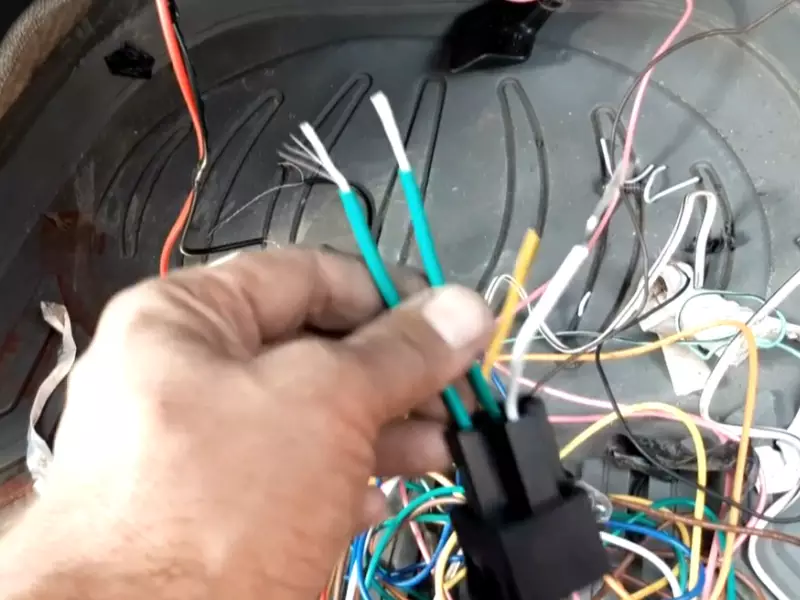
Exploring advanced features and upgrades
If you are looking for even more advanced features and upgrades, there are options available to suit your needs. These additions can provide you with heightened security and peace of mind. Here are a few advanced features to consider:
- Shock Sensors: Shock sensors detect any impact or vibration on your vehicle and trigger the alarm system. This not only alerts you to potential break-ins but also deters thieves from targeting your car.
- Proximity Sensors: Proximity sensors create an invisible field around your vehicle and sound the alarm when someone or something enters that zone. This feature is particularly useful in crowded areas or parking lots.
- Two-Way Paging: Two-way paging systems provide feedback on the status of your car alarm system. They can alert you if the alarm is triggered, the doors are locked/unlocked, or the engine is started. This feature keeps you informed even when you are not near your vehicle.
- Smartphone Integration: Some car alarm systems offer integration with your smartphone through dedicated mobile applications. This allows you to control and monitor your car alarm system remotely, providing added convenience and control.
As the technology continues to evolve, there are constantly new features and upgrades being introduced for car alarm systems. It is essential to stay informed and choose the options that best suit your needs. By enhancing the functionality and security of your car alarm system, you can have peace of mind knowing that your vehicle is well-protected from theft and break-ins.
Maintaining And Optimizing Your Car Alarm System
Once you have installed a car alarm system, it is essential to properly maintain and optimize it to ensure continuous protection for your vehicle. Regular maintenance practices and optimizing the performance and effectiveness of your car alarm system can go a long way in keeping your vehicle secure and giving you peace of mind.
Regular maintenance practices to keep your system in top condition
Regular maintenance plays a crucial role in the longevity and performance of your car alarm system. Here are some key maintenance practices to keep your system in top condition:
- Check the battery: The battery is the lifeblood of your car alarm system. Regularly check the battery voltage to ensure it is operating at the optimal level. A weak battery can diminish the performance of your alarm system, so consider replacing it if necessary.
- Inspect wiring connections: Periodically inspect the wiring connections of your car alarm system. Vibrations and movements while driving can cause loose connections, leading to malfunctions. Tighten any loose wiring to ensure proper functionality.
- Keep sensors clean: Over time, sensors may accumulate dust, dirt, or debris, interfering with their accuracy. Clean the sensors using a soft cloth or brush regularly to maintain their sensitivity and effectiveness.
- Test the system: Test your car alarm system regularly to ensure all components are functioning correctly. This can include activating the alarm, checking the sirens, and testing the responsiveness of the remote control. Any discrepancies or issues should be addressed immediately.
- Update firmware: If your car alarm system has firmware that can be updated, make sure you install the latest updates. Firmware updates often include bug fixes, improved functionality, and enhanced security features.
- Refer to the user manual: Always refer to the user manual provided by the manufacturer for specific maintenance instructions and recommended schedules. Following the guidelines outlined in the manual will help you maintain your car alarm system effectively.
Optimizing the performance and effectiveness of your car alarm system
To maximize the performance and effectiveness of your car alarm system, consider implementing the following optimization practices:
- Adjust sensitivity settings: Most car alarm systems allow you to adjust the sensitivity levels according to your preferences. Find the right balance to avoid false alarms while ensuring maximum protection.
- Utilize additional features: Many car alarm systems offer additional features beyond basic alarm systems, such as remote start, GPS tracking, and smartphone integration. Take advantage of these features to enhance the security and convenience of your vehicle.
- Park in well-lit areas: Parking your vehicle in well-lit areas can deter potential thieves and help improve the effectiveness of your car alarm system. Bright lighting enhances the visibility of your vehicle’s security measures, making it less attractive to criminals.
- Secure all entry points: Ensure that all doors, windows, and other access points are properly secured before activating your car alarm system. This simple step can prevent any vulnerabilities in your vehicle’s security.
- Consider professional installation: While DIY installation is possible, professional installation can ensure that your car alarm system is correctly integrated into your vehicle’s electrical system. A professionally installed system may offer better performance and reduce the risk of malfunctions.
By following these regular maintenance practices and optimizing the performance of your car alarm system, you can enhance the security of your vehicle and enjoy the peace of mind that comes with it.
Frequently Asked Questions Of How To Install A Car Alarm System
Can I Install Car Alarm Myself?
Yes, you can install a car alarm yourself. It is important to follow the instructions carefully and have basic knowledge of car wiring. Remember to consider the compatibility of the alarm with your vehicle. It’s always advisable to consult the installation manual or seek professional assistance if needed.
How Do You Install A Car Theft Alarm?
To install a car theft alarm, follow these steps: Identify the alarm type that suits your needs. Gather the necessary tools and equipment. Disconnect the battery. Mount the alarm components as instructed. Connect all the wires properly. Test the alarm system to ensure it works correctly.
Can You Add A Security System To A Car?
Yes, you can easily add a security system to your car for enhanced protection against theft or break-ins.
How Long Does It Take To Install A Security System On A Car?
It typically takes around 2 to 4 hours to install a security system on a car.
Conclusion
To successfully install a car alarm system, follow these step-by-step instructions for improved vehicle security. Remember to gather all necessary tools and materials before starting the installation process. By carefully installing the alarm system, you can protect your car against potential thefts and ensure peace of mind.
Enhance your vehicle’s safety and security with a professionally installed car alarm system today.
